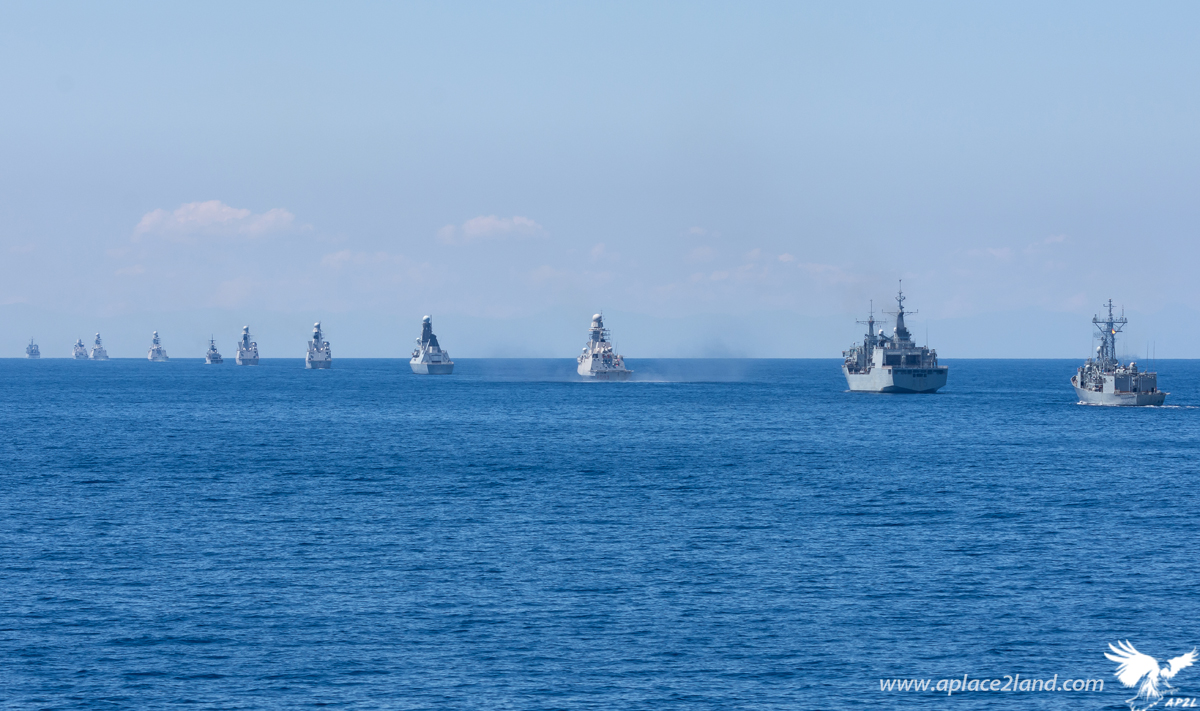
Mare Aperto: the largest exercise of Marina Militare Italiana.
Mediterranean Sea 29 April – 10 May 2019
Considered a blue-water navy, the Italian Navy (Marina Militare) is one of the most powerful maritime force in the world and it is certainly among the five most important navies within NATO. Obviously, in order to maintain and improve the efficiency of such an important military device it is essential to carry out adequate training. This is the raison d’être of Mare Aperto exercise.

Running annualy, Mare Aperto, the largest exercise of the Italian Navy was conducted by the Commander in Chief Naval Fleet (Italian: Comando in Capo della Squadra Navale or CINCNAV) embarked aboard the Giuseppe Garibaldi (C551) aircraft carrier, which returned to be the flagship of the Italian Navy. In fact Cavour aircraft carrier (C550) is currently at maintenance and overhaul works in order to accomodate the F-35B Lightining II fighter jets.

The Mare Aperto scenario was characterized by a multidimensional threat that imposed increasing difficulties to the Commanders at sea. Furthermore, in order to improve the combat readiness of the various forces involved, total decision-making freedom was given at the Commanders during planning and carrying out operations.

During these 12 days of operations during Mare Aperto, ships and crews have trained themselves to conduct naval operations in possible crisis areas with presence of conventional and asymmetric and cyber threats.
CINCNAV, which is responsible for the operational aspects of Italian Navy, evaluated the capability and the readiness of the forces during anti-aircraft defense warfare, anti-submarine and anti-ship warfare, mine countermeasures warfare, as well as the management of on-board emergencies and the during the projection of an amphibious force from the sea to land.
Together with the Italian Coast Guard and the Guardia di Finanza joint activities were carried out to prevent marine pollution and to combat illicit sea traffic with simulation of Law Enforcement operations.

Briefing with the Commander of the CINCNAV
During the briefing with the press the Commander of the CINCNAV, Admiral Donato Marzano, explains: “Training at sea is essential to improve the conduct and effectiveness of Maritime Operations in an environment characterized by conventional and asymmetric threats. Moreover, it allows us to assess the preparation and efficiency of our Navy, test its operational readiness and facilitate the integration process with the other Armed Forces and national agencies along with we must collaborate more and more often to absolve the institutional tasks and ensure the defense of national interests, strengthening in particular the maritime surveillance in the Mediterranean Sea.”

He adds: “I would also like to highlight the presence on board our naval vessels of observers from the navies of 10 partner countries and the participation of military vessels belonging eight NATO Countries, including Canada, France, United Kingdom, Holland, Portugal, Spain and United States. “
In numerical terms, Mare Aperto was an impressive exercise. “With the exception of the ships tasked in the various theaters of operation, all the rest of Italian Navy’s ships are involved in the Mare Aperto 2019. 6000 sailors are at sea, enbarked in more than 40 surface vessels and 3 submarines along with 30 jets and helicopters” the Admiral concludes.
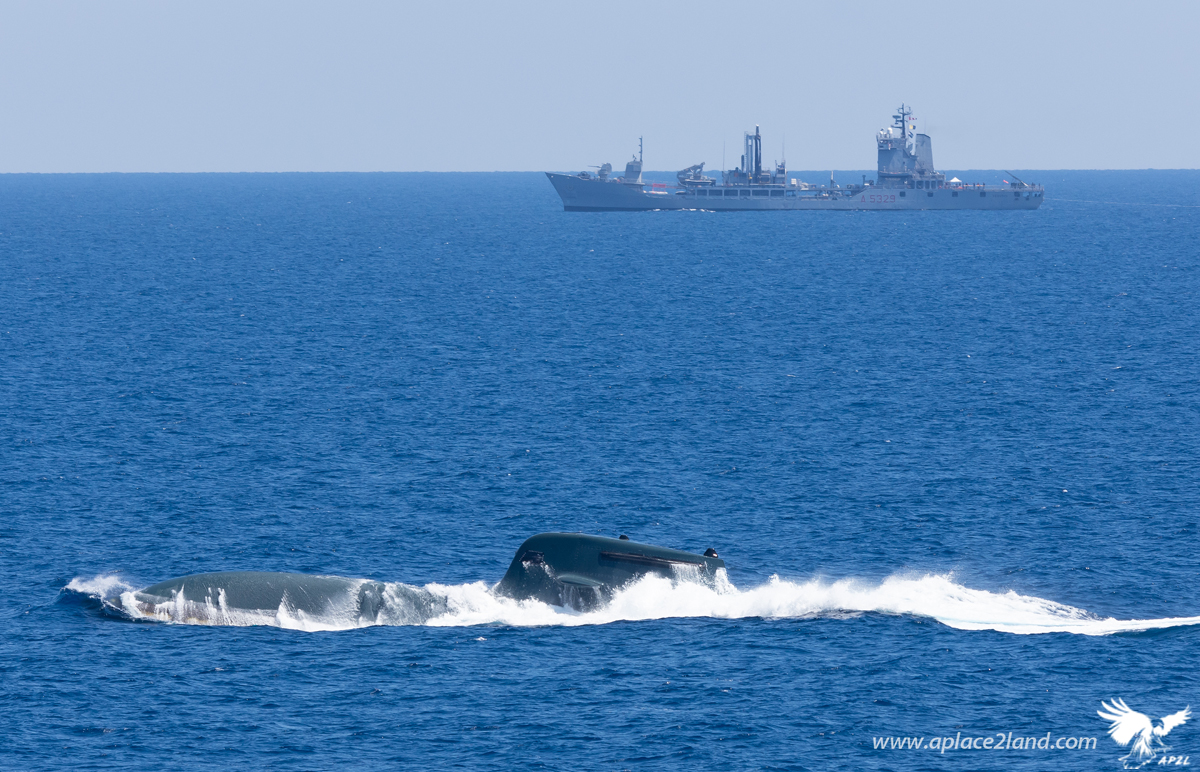
In addition to these numbers, vessels belonging both Coast Guard and Guardia di Finanza, along with air assets of the Italian Air Force were tasked for Mare Aperto 2019. In particular Typhoons, AMXs and Tornados constituted the combat component, while a single KC-767A assured support and in-flight refueling.The new G-550 CAEW (Conformal Airborne Early Warning) has performed aerial surveillance, as well as C3 operations. Operating from NAS Sigonella a P-72A provided maritime patrol missions. Finally there was a landing force composed by 400 Fusiliers of the 1st San Marco Regiment which operated together with the Lagunari belonging the amphibious assault Regiment Serenissima of the Italian Army.

Foreign presence
The presence of the U.S. Navy, who took part in the exercise with the USS Bainbridge destroyer and with Carrier Air Wing 7 (CAW-7) embarked on the USS Abraham Lincoln aircraft carrier which was in navigation about 300 kilometers away. Just before the aircraft carrier was diverted to the Middle East for operational duties, the CAW-7 carried out some sorties with its F-18s, playing the role of “Red Force” in order to train the vessels crews onto air defense operation and flying missions with and against the Italian Harriers. In addition a single P-8A Poseidon with anti-submarine and patrol duties also operated from the Naval Air Station Sigonella.
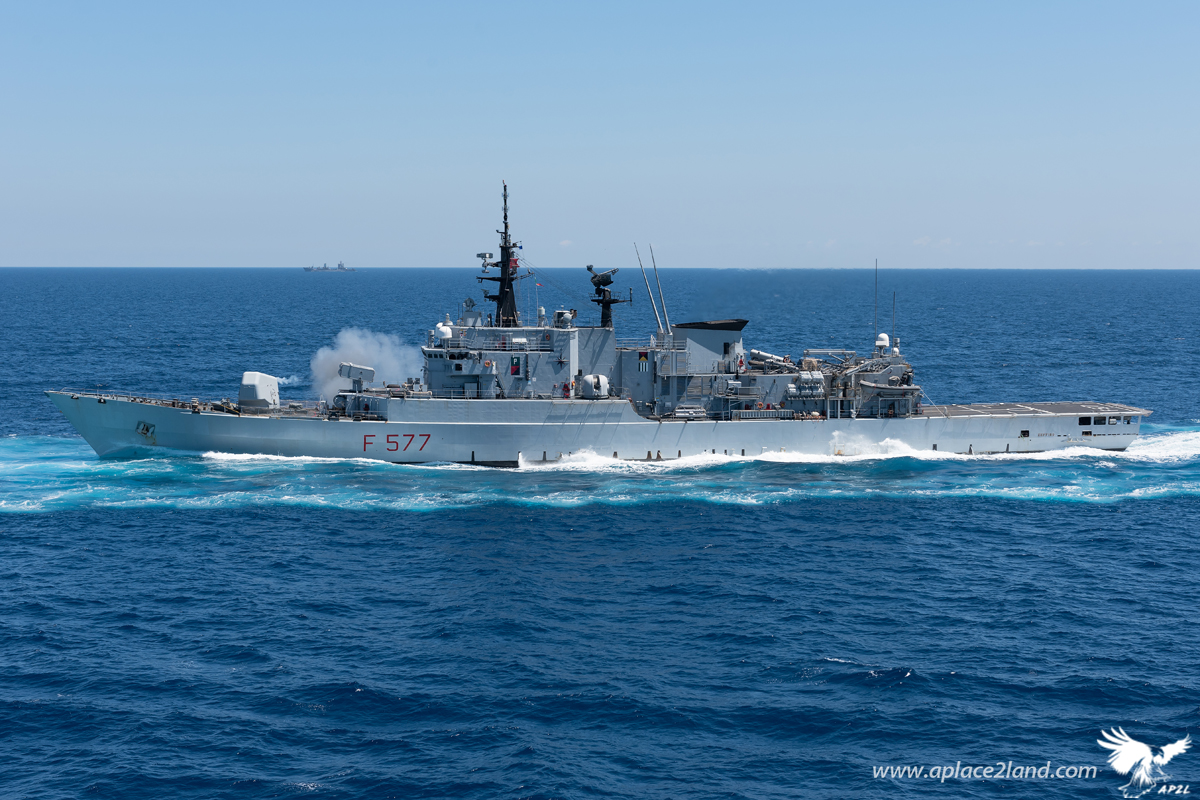
The Spanish Armada also participated in force deploying three naval units: the frigate Numancia, the Cantabria replenishment tanker and the LPD Galicia, that embarked 180 Fusiliers belonging Tercio de Armada.
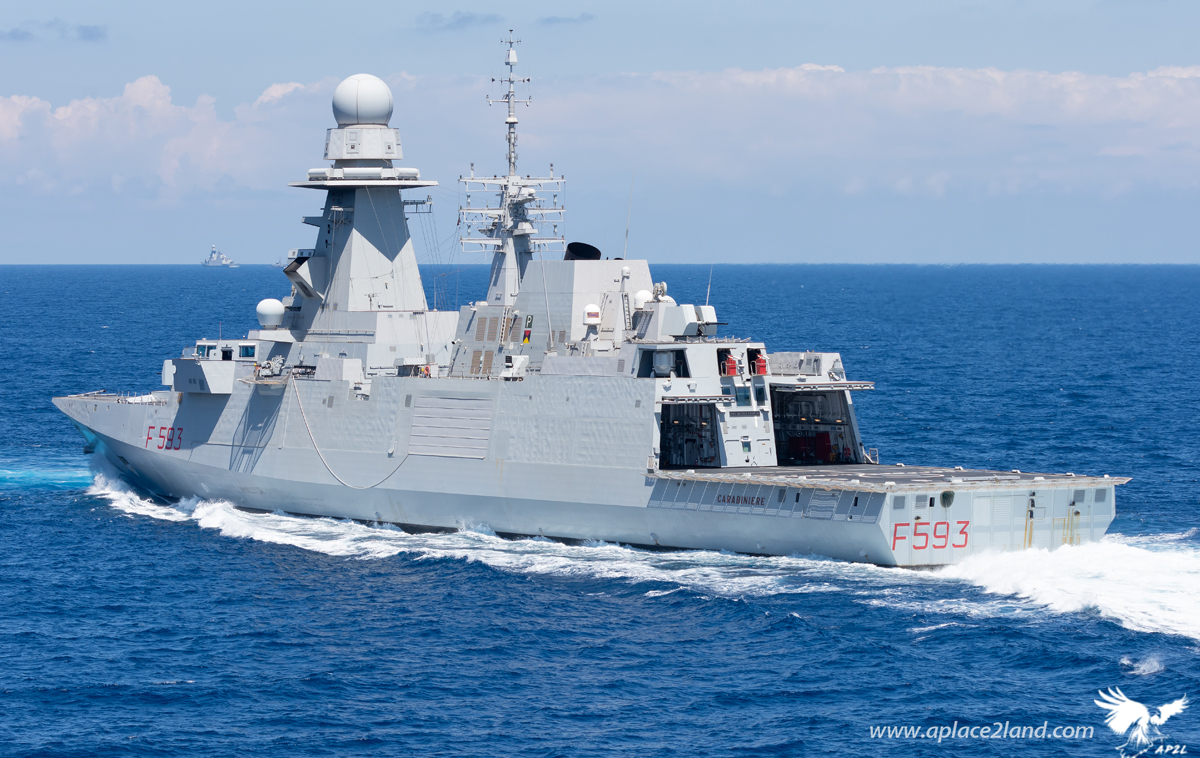
At NAS Sigonella, Germany and France have deployed both a maritime patrol aircraft (respectively with a P-3 Orion and an Atlantique 2) with the second that has also made available the SSN Rubis.
The Portuguese Navy also participated with a submarine, the SSK Trident, while Canada with the frigate HMCS Toronto and the Royal Navy with the destroyer HMS Duncan, completed the foreign naval participation.

Mediterraneo Centrale 29 aprile – 10 maggio 2019
La Mare Aperto, quella che è la più grande esercitazione a livello nazionale della Marina Militare è stata condotta in mare dal Comando in Capo della Squadra Navale (CINCNAV) imbarcato a bordo della portaeromobili Giuseppe Garibaldi, tornata a ricoprire il ruolo di ammiraglia della flotta in attesa del rientro in squadra della portaerei Cavour.

Lo scenario esercitativo della Mare Aperto era caratterizzato da una minaccia multidimensionale che imponeva difficoltà crescenti ai Comandanti in mare. A questi ultimi, veniva data totale libertà decisionale nella pianificazione e nello svolgimento delle operazioni, al fine di migliorare la combat readiness delle forze impegnate. Durante questi 12 giorni navi ed equipaggi si sono addestrati alle principali forme di lotta sul mare e dal mare (difesa antiaerea, guerra antisommergibile e antinave, operazioni di assalto anfibio e di contromisure mine), alla conduzione di operazioni in possibili aree di crisi con presenza di minacce convenzionali e asimmetriche e cyber, oltre alla gestione delle emergenze di bordo e alla proiezione di una forza anfibia dal mare su terra.
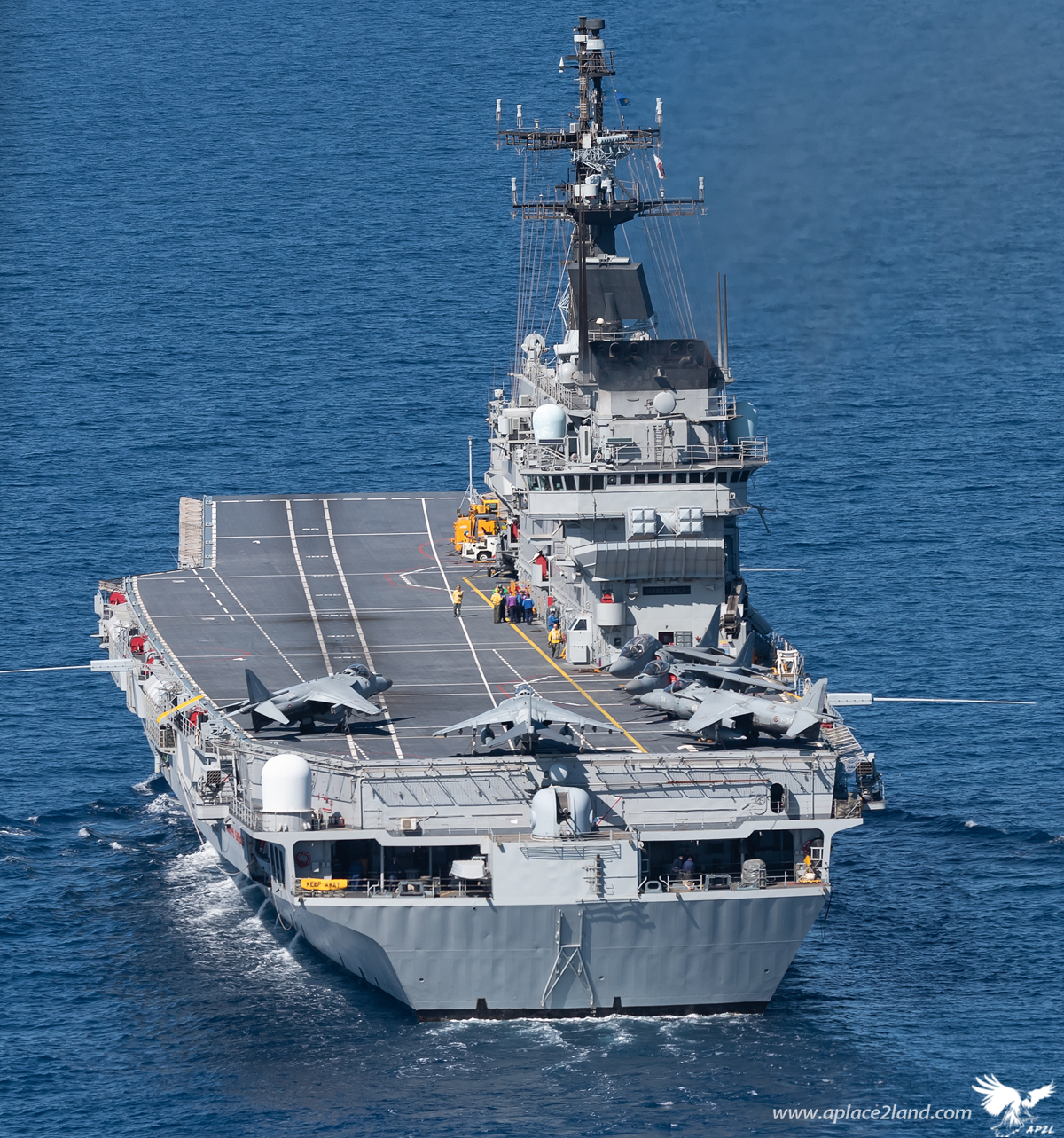
Insieme alla Guardia Costiera e alla Guardia di Finanza si sono svolte attività congiunte di prevenzione e contrasto dell’inquinamento marino e contrasto ai traffici illeciti sul mare con simulazione di operazioni di Law Enforcement.
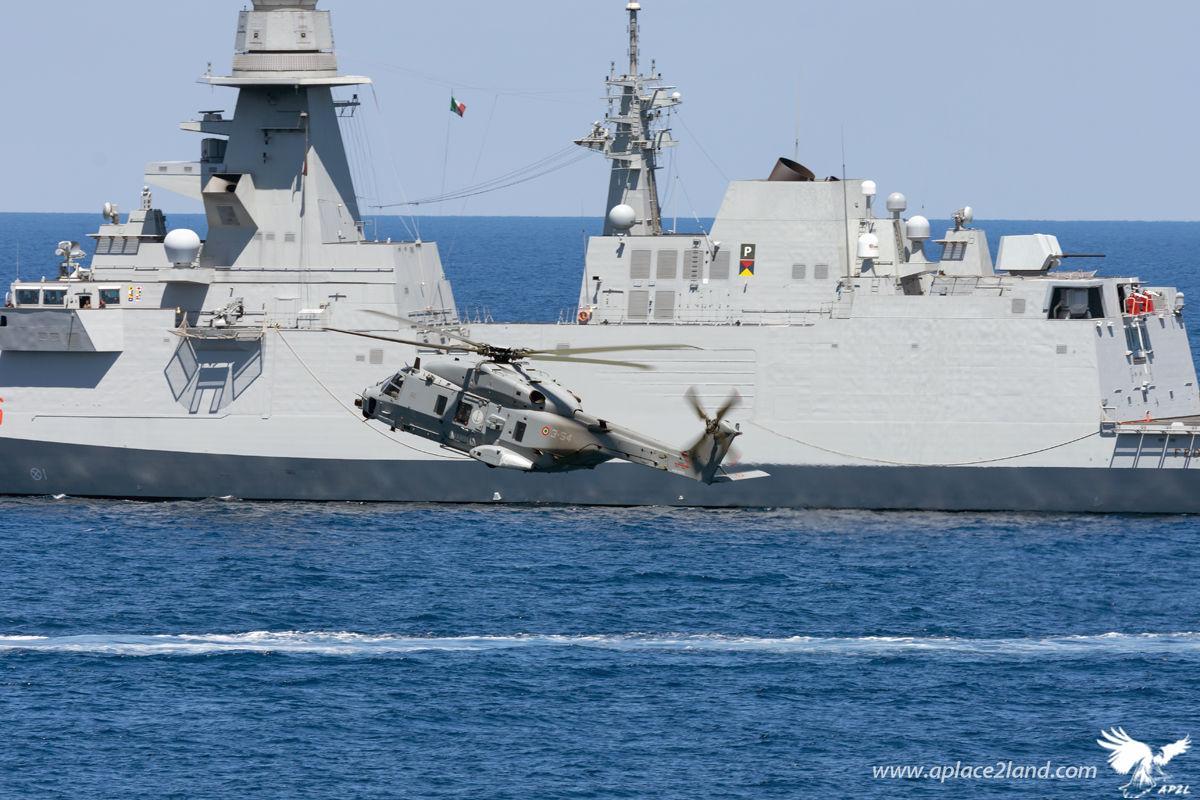
Briefing con il Comandante del CINCNAV
Durante il briefing con la stampa il Comandante in Capo della Squadra Navale, l’Ammiraglio di squadra Donato Marzano spiega: “L’addestramento in mare è fondamentale per poter migliorare la condotta e l’efficacia di Operazioni Marittime in un ambiente caratterizzato da una minaccia convenzionale e asimmetrica. Inoltre permette di valutare la preparazione e l’efficienza della nostra Marina Militare, testarne la prontezza operativa e favorire il processo di integrazione con le altre Forze Armate e le agenzie nazionali con le quali siamo chiamati a collaborare sempre più spesso per assolvere in sicurezza i compiti istituzionali e assicurare la difesa degli interessi nazionali, rafforzando in particolar modo la sorveglianza marittima nel Mediterraneo.”

Lo stesso Ammiraglio aggiunge: “Vorrei inoltre sottolineare la presenza a bordo delle unità navali italiane, di osservatori provenienti dalle marine di 10 Paesi partner e la partecipazione unità aeronavali di otto paesi NATO tra quali Canada, Francia, Regno Unito, Olanda, Portogallo, Spagna e Stati Uniti.”

In termini numerici, la Mare Aperto si è trattata di una esercitazione decisamente imponente. “Per quanto riguarda la Marina Militare Italiana praticamente tutto quello che può navigare partecipa alla Mare Aperto 2019, ovviamente con l’eccezione delle unità impegnate in missioni nei vari teatri d’operazione. Sono in mare 6000 marinai, imbarcati su oltre 40 unità navali di superficie e 3 sommergibili con 30 velivoli imbarcati” conclude l’Ammiraglio.
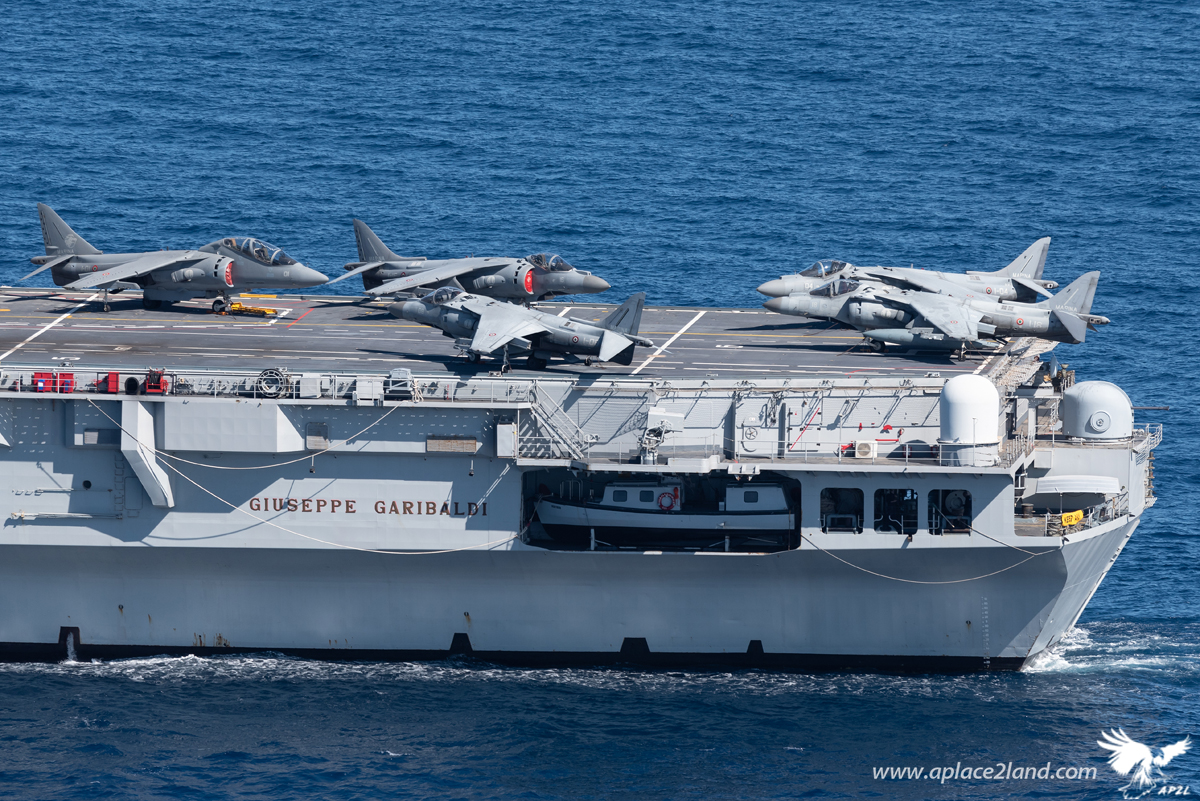
A questi numeri vanno aggiunte unità aeronavali della Guardia Costiera e della Guardia di Finanza e assetti aerei dell’Aeronautica Militare. In particolare Typhoon, AMX e Tornado hanno costituito la componente da combattimento, con un singolo KC-767A che assicurato il supporto e il rifornimento in volo, un G-550 CAEW (Conformal Airborne Early Warning) ha svolto funzioni di sorveglianza aerea, comando e controllo e comunicazioni mentre un P-72A ha assicurato missioni di pattugliamento marittimo. Infine era presente una forza da sbarco composta da 400 Fucilieri di Marina della Brigata Marina San Marco e una aliquota di militari del reggimento lagunari Serenissima dell’Esercito Italiano.
Presenza straniera
Significativa la presenza della U.S. Navy, che ha preso parte alla Mare Aperto con il cacciatorpediniere USS Bainbridge e con il Carrier Air Wing 7 (CAW-7) imbarcato sulla portaerei USS Abraham Lincoln che incrociava nel Mediterraneo a circa 300 chilometri di distanza. Prima che la portaerei fosse dirottata verso il Medio Oriente per esigenze operative, il CAW-7 ha svolto alcune sortite con i suoi F-18 Super Hornet con il ruolo di “Red Force” per addestrare gli equipaggi delle navi alla difesa antiaerea e volando missioni di vario tipo con gli Harrier del GRUPAER della Marina Militare. Dalla base aerea di Sigonella ha poi operato anche un P-8A Poseidon con compiti antisommergibile e di pattugliamento.
Anche la Armada spagnola ha partecipato in forze schierando ben tre unità navali: la fregata Numancia, il rifornitore Cantabria e la nave da sbarco anfibio Galicia che imbarcava 180 Fucilieri di Marina del Tercio de Armada.

Germania e Francia hanno schierato entrambe un aereo da pattugliamento marittimo (rispettivamente con un P-3 Orion e un Atlantique 2) con la seconda che ha messo a disposizione anche il sommergibile nucleare da attacco Rubis.
Anche la Marina Portoghese ha partecipato con un sottomarino, l’SSK Tridente, mentre il Canada con la fregata HMCS Toronto e la Royal Navy con il caccatorpediniere HMS Duncan, completavano il quadro degli assetti navali stranieri.
